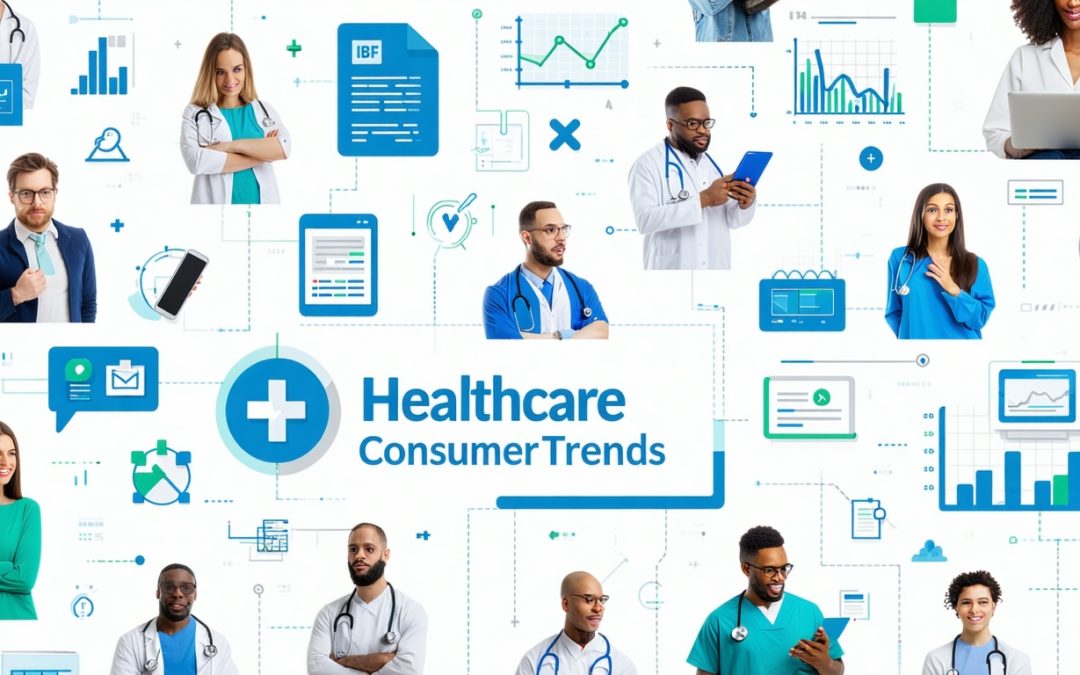Healthcare Marketing Trends for Young Professionals
Staying informed about the latest trends in healthcare marketing is essential for young professionals entering the private healthcare sector. Understanding these trends can significantly influence their approach to marketing strategies and patient engagement.
Importance of Staying Updated
The healthcare landscape is constantly evolving, driven by technological advancements, changing consumer behaviors, and regulatory shifts. For young professionals, keeping abreast of these changes is crucial for several reasons:
- Competitive Advantage: Knowledge of current trends allows professionals to develop innovative marketing strategies that stand out in a crowded market.
- Enhanced Patient Engagement: Understanding what patients value helps in creating targeted campaigns that resonate with their needs and preferences.
- Adaptability: The ability to quickly adapt to new trends ensures that marketing efforts remain relevant and effective.
| Reason | Description |
|---|---|
| Competitive Advantage | Stand out with innovative strategies |
| Enhanced Patient Engagement | Create targeted campaigns |
| Adaptability | Stay relevant in a changing market |
For more insights on the broader landscape, refer to our article on healthcare industry trends.
How Trends Impact Private Healthcare
Trends in healthcare marketing have a direct impact on private healthcare providers. These trends shape how services are marketed, how patients interact with providers, and ultimately, how care is delivered. Key impacts include:
- Increased Focus on Digital Marketing: With more patients seeking information online, private healthcare providers are investing in digital marketing strategies to reach their audience effectively.
- Personalization of Services: Trends towards personalized healthcare are prompting providers to tailor their services and marketing messages to individual patient needs. This shift enhances patient satisfaction and loyalty.
- Emphasis on Transparency: Patients are increasingly demanding transparency regarding costs and services. Providers that embrace this trend can build trust and credibility with their audience.
| Impact | Description |
|---|---|
| Increased Focus on Digital Marketing | Investment in online strategies |
| Personalization of Services | Tailored services for individual needs |
| Emphasis on Transparency | Building trust through clear communication |
For a deeper understanding of how these trends are shaping the industry, explore our articles on healthcare market trends and healthcare technology trends.
Personalization in Healthcare Marketing
Personalization is becoming a key focus in healthcare marketing, especially for young professionals considering private healthcare. Tailoring experiences to meet individual patient needs can significantly enhance engagement and satisfaction.
Customized Patient Experiences
Creating customized patient experiences involves understanding the unique preferences and requirements of each patient. This approach not only improves patient satisfaction but also fosters loyalty and trust. Healthcare providers are increasingly utilizing various strategies to personalize interactions, such as:
- Tailored Communication: Sending personalized messages and reminders based on patient history and preferences.
- Individualized Treatment Plans: Developing treatment plans that consider the specific needs and circumstances of each patient.
- Feedback Mechanisms: Implementing systems to gather patient feedback, allowing for continuous improvement in services.
The following table illustrates the impact of personalized experiences on patient satisfaction:
| Customization Strategy | Impact on Patient Satisfaction (%) |
|---|---|
| Tailored Communication | 75 |
| Individualized Treatment Plans | 85 |
| Feedback Mechanisms | 70 |
Leveraging Data for Personalization
Data plays a crucial role in personalizing healthcare marketing. By analyzing patient data, healthcare providers can gain insights into patient behaviors, preferences, and needs. This information can be used to create targeted marketing campaigns and improve service delivery. Key data sources include:
- Patient Surveys: Collecting feedback directly from patients to understand their experiences and expectations.
- Electronic Health Records (EHRs): Utilizing EHRs to track patient history and preferences, enabling more informed decision-making.
- Analytics Tools: Implementing analytics tools to interpret data trends and patterns, allowing for proactive adjustments in marketing strategies.
The following table highlights the benefits of leveraging data in healthcare marketing:
| Data Source | Benefit |
|---|---|
| Patient Surveys | Direct insights into patient needs |
| Electronic Health Records | Comprehensive view of patient history |
| Analytics Tools | Identification of trends for targeted marketing |
By focusing on personalized patient experiences and effectively leveraging data, healthcare providers can stay ahead in the evolving landscape of healthcare marketing trends. This approach not only enhances patient satisfaction but also contributes to the overall success of private healthcare initiatives. For more insights on emerging strategies, explore our article on personalized healthcare trends.
Telemedicine and Virtual Care
The rise of telemedicine and virtual care has transformed the landscape of healthcare, particularly in private settings. Young professionals must understand these changes as they navigate the evolving healthcare marketing trends.
Rise of Telehealth Services
Telehealth services have gained significant traction in recent years. The convenience of accessing healthcare remotely has made it an attractive option for many patients. Factors contributing to this rise include:
- Increased smartphone and internet accessibility
- Growing demand for convenient healthcare solutions
- The need for continuity of care during public health crises
The following table illustrates the growth of telehealth services over recent years:
| Year | Percentage of Patients Using Telehealth |
|---|---|
| 2018 | 11% |
| 2019 | 15% |
| 2020 | 46% |
| 2021 | 38% |
This data highlights the rapid adoption of telehealth, especially during the pandemic, and indicates a lasting shift in patient preferences.
Benefits and Challenges of Virtual Care
Virtual care offers numerous benefits, but it also presents challenges that healthcare providers must address.
Benefits:
- Convenience: Patients can consult healthcare professionals from the comfort of their homes.
- Accessibility: Telehealth can reach individuals in remote areas or those with mobility issues.
- Cost-Effectiveness: Virtual visits can reduce travel costs and time off work.
Challenges:
- Technology Barriers: Not all patients have access to the necessary technology or internet connectivity.
- Regulatory Issues: Different states have varying regulations regarding telehealth services.
- Quality of Care: Some patients may feel that virtual consultations lack the personal touch of in-person visits.
Understanding these benefits and challenges is crucial for young professionals in the healthcare sector. For more insights into the evolving landscape, explore our articles on healthcare industry trends and healthcare technology trends.
Content Marketing Strategies
In the evolving landscape of private healthcare, effective content marketing strategies are essential for engaging young professionals. Two key approaches include creating educational content and utilizing social media platforms.
Educational Content for Engagement
Educational content serves as a powerful tool for engaging potential patients and building trust. By providing valuable information, healthcare organizations can position themselves as thought leaders in the industry. This type of content can take various forms, including blog posts, videos, webinars, and infographics.
The following table outlines the types of educational content and their effectiveness in engaging audiences:
| Content Type | Engagement Level (%) |
|---|---|
| Blog Posts | 65 |
| Videos | 75 |
| Webinars | 80 |
| Infographics | 70 |
Creating content that addresses common health concerns, explains treatment options, or offers wellness tips can attract and retain the attention of young professionals. For more insights on the latest trends in healthcare content, refer to our article on healthcare industry trends.
Utilizing Social Media Platforms
Social media platforms are vital for reaching and engaging young professionals. These platforms allow healthcare organizations to share educational content, interact with their audience, and promote services. The most popular social media platforms for healthcare marketing include Facebook, Instagram, LinkedIn, and Twitter.
The following table highlights the effectiveness of various social media platforms in healthcare marketing:
| Platform | Engagement Rate (%) | Best Use Case |
|---|---|---|
| 50 | Community building and updates | |
| 65 | Visual storytelling and tips | |
| 40 | Professional networking and insights | |
| 30 | Real-time updates and news |
By leveraging these platforms, healthcare organizations can create a community around their services and foster relationships with potential patients. Engaging with followers through comments, shares, and direct messages can enhance trust and credibility. For more information on how to effectively use social media in healthcare, check out our article on healthcare market trends.
Incorporating educational content and social media strategies into healthcare marketing can significantly enhance engagement with young professionals considering private healthcare options.
Influencer Marketing in Healthcare
Influencer marketing has emerged as a significant trend in the healthcare sector, particularly for young professionals navigating private healthcare. This approach leverages the reach and credibility of individuals who have established trust with their audience.
Collaborating with Industry Influencers
Collaborating with industry influencers can enhance the visibility of healthcare services and products. Influencers often have a dedicated following that trusts their opinions, making them effective advocates for healthcare brands. By partnering with these individuals, healthcare organizations can tap into their audience and promote services in a more relatable manner.
| Influencer Type | Description | Benefits |
|---|---|---|
| Healthcare Professionals | Doctors, nurses, and specialists | Credibility and expertise |
| Patient Advocates | Individuals sharing personal health journeys | Authenticity and relatability |
| Health and Wellness Bloggers | Content creators focused on health topics | Broad reach and engagement |
These collaborations can take various forms, including sponsored posts, social media takeovers, and educational webinars. By utilizing influencers, healthcare organizations can effectively communicate their message and engage with potential patients.
Building Trust and Credibility
Trust is a crucial factor in healthcare marketing. Influencer partnerships can help build this trust by providing authentic endorsements. When influencers share their positive experiences with a healthcare service or product, it resonates with their audience, fostering a sense of credibility.
Research indicates that consumers are more likely to trust recommendations from individuals they follow online than traditional advertising. This shift highlights the importance of integrating influencer marketing into broader healthcare marketing strategies.
| Trust Factors | Impact on Consumer Behavior |
|---|---|
| Authenticity | Increases likelihood of engagement |
| Expertise | Enhances perceived reliability |
| Relatability | Encourages sharing and discussion |
By focusing on building relationships with influencers who align with their values, healthcare organizations can create a more trustworthy image. This approach not only attracts new patients but also retains existing ones, contributing to long-term success in the competitive healthcare landscape.
For more insights on the evolving landscape of healthcare marketing, explore our articles on healthcare industry trends and emerging trends in healthcare industry.
Embracing Technology
The integration of technology in healthcare marketing is transforming how services are delivered and how patients interact with providers. Young professionals in the private healthcare sector must stay informed about these advancements to remain competitive.
AI and Machine Learning in Healthcare Marketing
Artificial Intelligence (AI) and machine learning are becoming essential tools in healthcare marketing. These technologies enable healthcare providers to analyze vast amounts of data, leading to more informed decision-making and targeted marketing strategies.
AI can help in predicting patient needs and preferences, allowing for more personalized communication. For instance, chatbots powered by AI can provide immediate responses to patient inquiries, enhancing the overall patient experience.
| Application | Benefits |
|---|---|
| Predictive Analytics | Anticipates patient needs and improves service delivery |
| Chatbots | Provides 24/7 support and answers common questions |
| Targeted Advertising | Increases engagement by reaching the right audience |
The use of AI and machine learning not only improves marketing efficiency but also enhances patient satisfaction. For more insights on how technology is shaping the healthcare landscape, refer to our article on healthcare technology trends.
Implementing Innovative Technologies
In addition to AI, other innovative technologies are making waves in healthcare marketing. Virtual reality (VR), augmented reality (AR), and mobile applications are being utilized to create engaging patient experiences.
For example, VR can be used for patient education, allowing individuals to visualize procedures and understand their health conditions better. AR can enhance marketing campaigns by providing interactive content that captures the audience’s attention.
| Technology | Use Case |
|---|---|
| Virtual Reality | Patient education and immersive experiences |
| Augmented Reality | Interactive marketing campaigns |
| Mobile Applications | Convenient access to healthcare services |
These technologies not only improve patient engagement but also streamline operations within healthcare organizations. Young professionals should explore these emerging tools to stay ahead in the competitive healthcare market. For further reading on the latest trends, check out our article on emerging trends in healthcare industry.












0 Comments